Tracking The Growth Of International Trade Around The World (And What To Expect In The Future) International trade has seen extraordinary growth since the 1960s when it represented less than 10% of global GDP to over 20% since early 2000s.
By Erika Masako Welch •
Opinions expressed by Entrepreneur contributors are their own.
You're reading Entrepreneur Middle East, an international franchise of Entrepreneur Media.

In 2022, DP World Group partnered with Entrepreneur Middle East and Lucidity Insights to publish Innovations in International Trade, a special report analyzing innovations in international trade.
The report covers multiple features of international trade, from its evolution, to the role it plays in uplifting societies and economies, and its future developments. It also covers the role technology has played in international trade, and what is expected going forward, given the impact of the fourth industrial revolution.
Last but not least, sustainability is a global topic piquing interest across different industries, with international trade being a significant contributor to greenhouse gas (GHG) emissions. Accordingly, this report also briefly explores initiatives that the industry is taking to address the sustainability challenge.
H.E. Ahmed Bin Sulayem, Chairman and CEO of DP World Group, said, "We have made efforts to ensure this special report provides a valuable resource for anyone that wishes to get an up-to-date snapshot on the health of our global economy. But we have also helped to paint a picture that balances between the contextual and contemporary, providing history on the growth of international trade, a fuller understanding of the intricate networks that hold it all together, what technologies have helped to navigate the challenges our supply chains have faced in the past three years, as well as how digitalization will shape the future of trade."
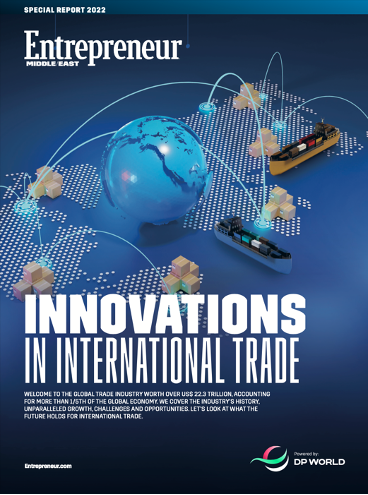
International trade has seen extraordinary growth since the 1960s when it represented less than 10% of global GDP to over 20% since the early 2000s. Till 2000, developing countries used to comprise only one-third of the share of global trade, and this has increased significantly to 48% in a matter of 15 years.
Countries have recognized the role that international trade plays in boosting their domestic economies. As trade increases, income also increases due to rising demand, resulting in efficiencies and cost optimization. This lowers the resulting acquisition cost, which further increases demand, which, in turn, increases employment potential and resulting income.
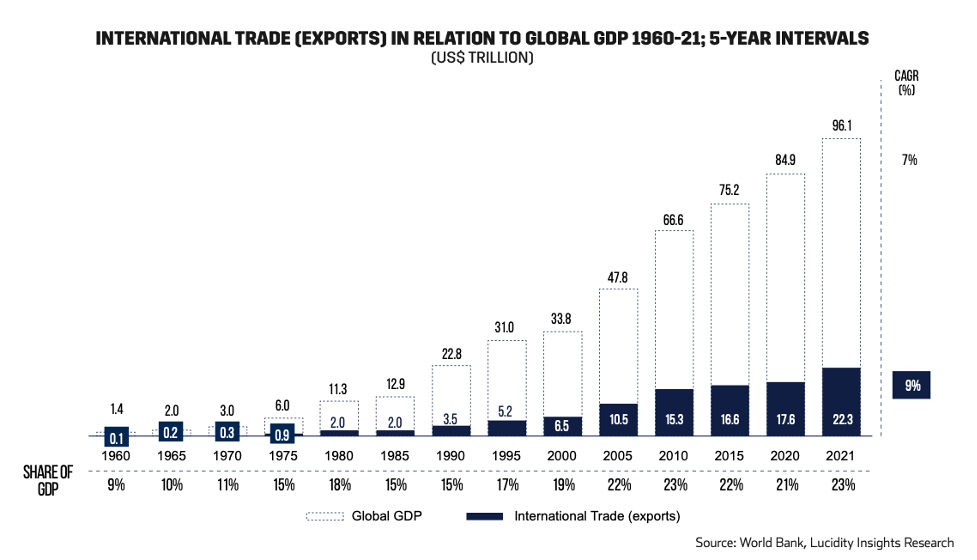
Asian countries have dominated trade primarily due to the dominance of China, which is the top exporter. Asia is expected to further dominate not just trade, but also the share of global gross domestic product (GDP). As of 2000, Asia's share of global GDP stood at one-third, and by 2017, it had already increased to 42%. By 2040, Asia is expected to account for over half of global GDP, along with holding more than half of the world's middle class.
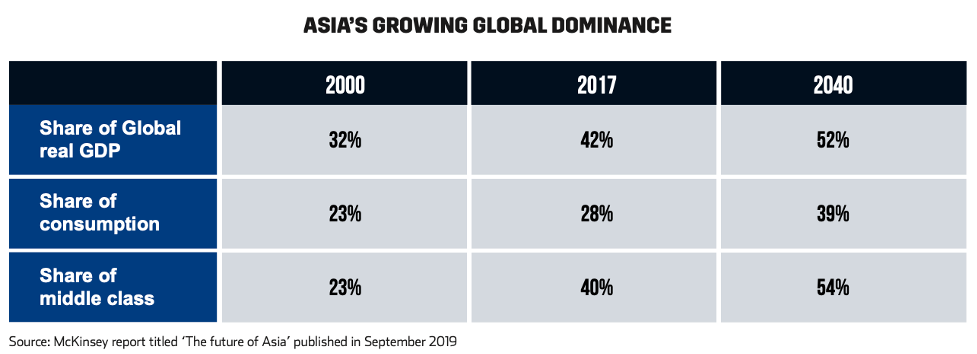
In fact, the McKinsey report titled The Future Of Asia, which was published in September 2019, suggests that by 2040, China's GDP would be larger than that of North America's. Advanced Asian countries, such as Australia, Japan, New Zealand and South Korea, will have a larger combined GDP than that of the Middle East and Africa. Meanwhile, the combined GDP of emerging Asia, which primarily consists of countries from South East Asia, will be larger than the GDP from Latin America.
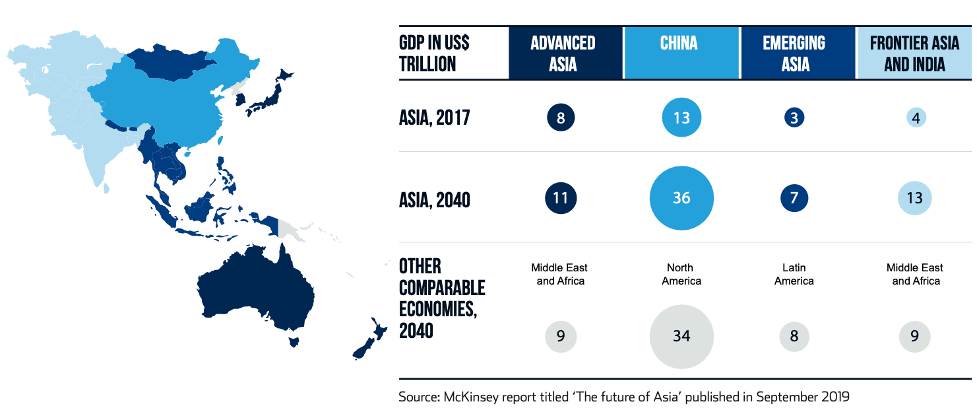
This is already witnessed in exports, as Asia already accounts for seven countries in the top 20 countries in exports, similar to the number of countries from Europe, which are also at seven.
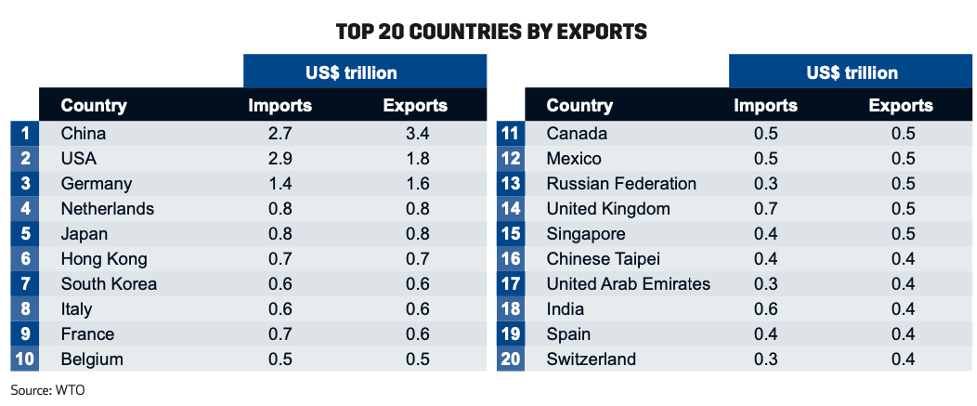
China is the largest exporter in the world, and it has the busiest port in the world, with Shanghai International Port having handled more than 47 million twenty-foot equivalents (TEUs) in 2021. Asia also dominates in the number of ports, based on number of containers handled in TEUs, where 13 of the top 20 ports are in the region.
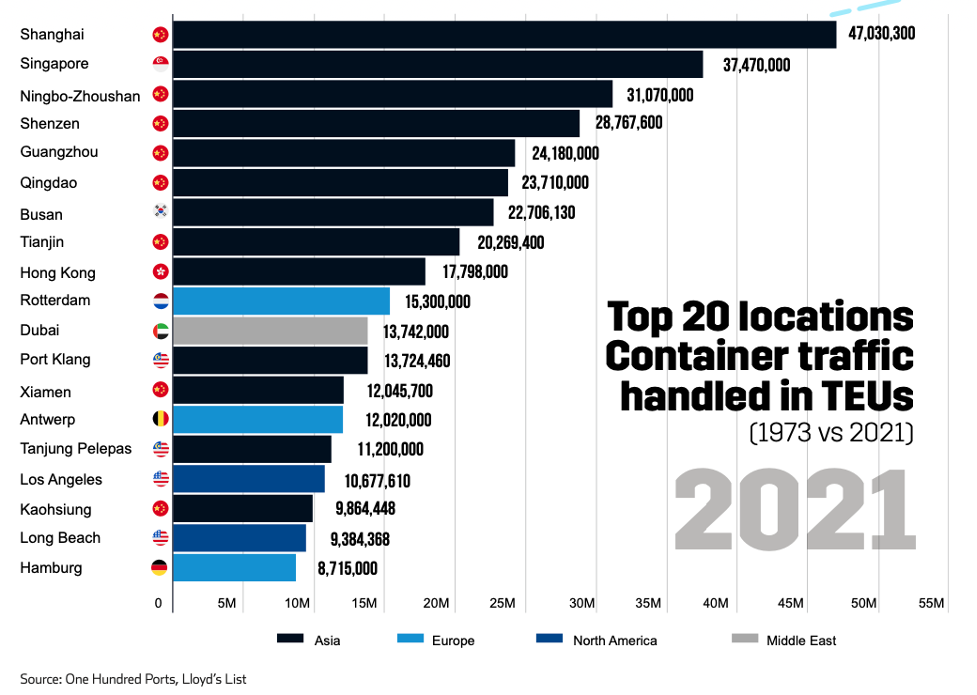
Check out our full report on Innovations in International Trade by clicking here.












